 |
 |
 |
| |
The Tip of an Iceberg - Who Is Known to Have Hepatitis C? - 'majority remain undiagnosed, especially in younger men outside the birth cohort....birth-cohort & risk based screening needed.....30-49 age.....88-65% remain undiagnosed....less than 33% overall were diagnosed with HCV.....prevalence 1-3.3%'
|
| |
| |
Reported by Jules Levin
DDW 2014 May 4-6 Chicago, ILL
W. Ray Kim1, Chung I. Wi2, Joseph J. Larson3, Barbara P. Yawn4, Joseph D. Yao5, Terry M. Therneau3
1Division of Gastroenterology and Hepatology, Stanford University School of Medicine, Stanford, CA; 2Division of Gastroenterology and Hepatology, Mayo Clinic, Rochester, MN; 3Division of Biostatistics and Informatics, Mayo Clinic, Rochester, MN; 4Department of Research, Olmsted Medical Center, Rochester, MN; 5Department of Laboratory Medicine and Pathology, Mayo Clinic, Rochester, MN
"Overall, well less than one third of HCV infection in the community were diagnosed......blood samples of 21,985 unique community residents between 30 and 49 years of age (born between 1954-1976) were collected for HCV testing in the study"....." from Jules: you can see the bar charts below where HCV prevalence was 1-1.2% among 30-34 age, 3.3% among men 35-39, 2.6% among men 40-44, and 2.3-3.3% among 45-49. These rates are similar to those reported in the baby boomer group born 1945-65. The rates of undiagnosed HCV is a key message here because although we have discussed & estimated how many have undiagnosed & estimations have ranged from 50-75% who remain undiagnosed throughout the USA, this study found only 11-26% were diagnosed in the 30-34 age group, 11-19% in the 35-39 group, 29% in the 40-44 group, & 31-35% in the 45-49 group. The authors conclude "the majority remain undiagnosed....especially in younger men....[we need] to institute community-wide birth-cohort & risk-based screening programs.
Background: Recent recommendations for birth cohort screening for hepatitis C virus (HCV) infection among US adults are predicated upon a prevailing belief that only a fraction of Americans with the infection has been diagnosed. However, firm data to indicate the extent to which HCV infection remains undiagnosed in community populations are scarce.
Aims: Based on data generated from a community-wide HCV screening project and a registry of known HCV patients, we calculate the proportion of community residents with HCV infection that have not been diagnosed.
Methods: Between 2003 and 2006, a community HCV prevalence study was conducted in Olmsted County, MN. Blood samples of community residents 30 to 49 years of age (corresponding to birth years between 1954 and 1976) who had healthcare encounters including phlebotomy were tested for anti-HCV.
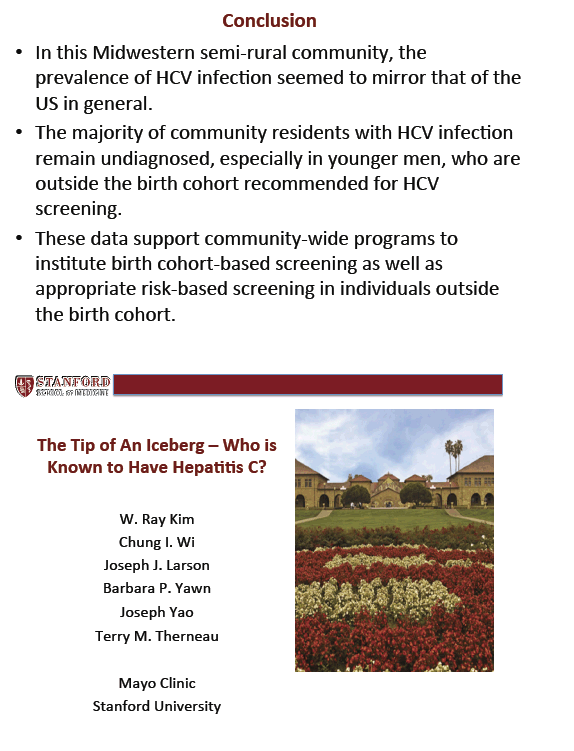
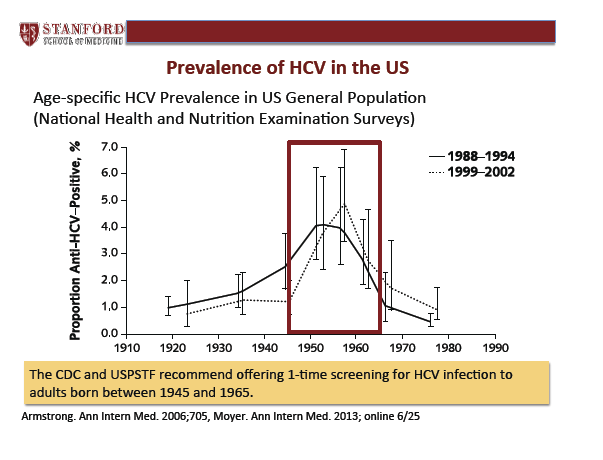
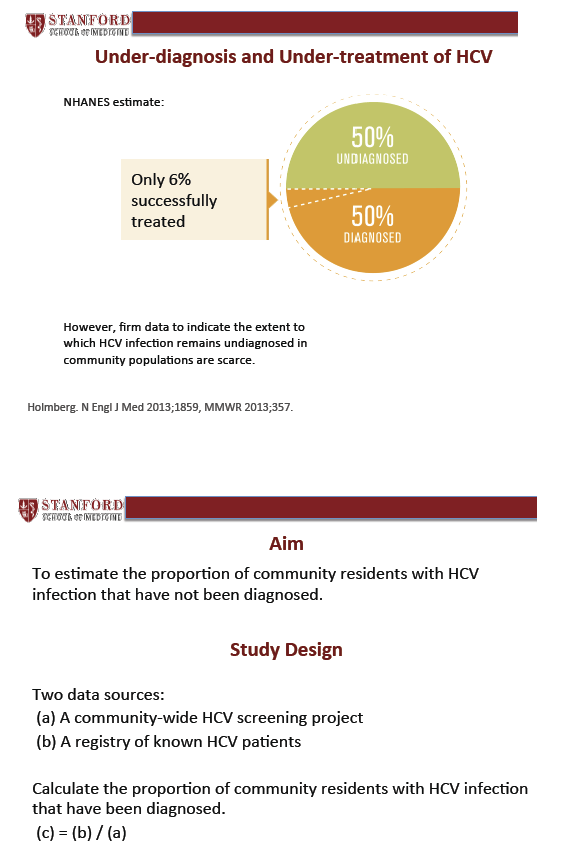
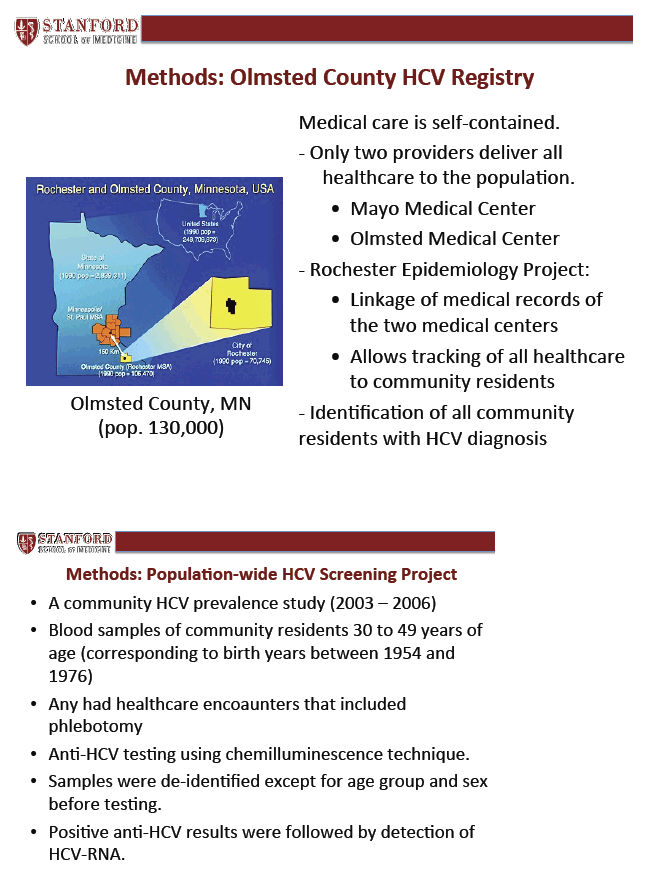

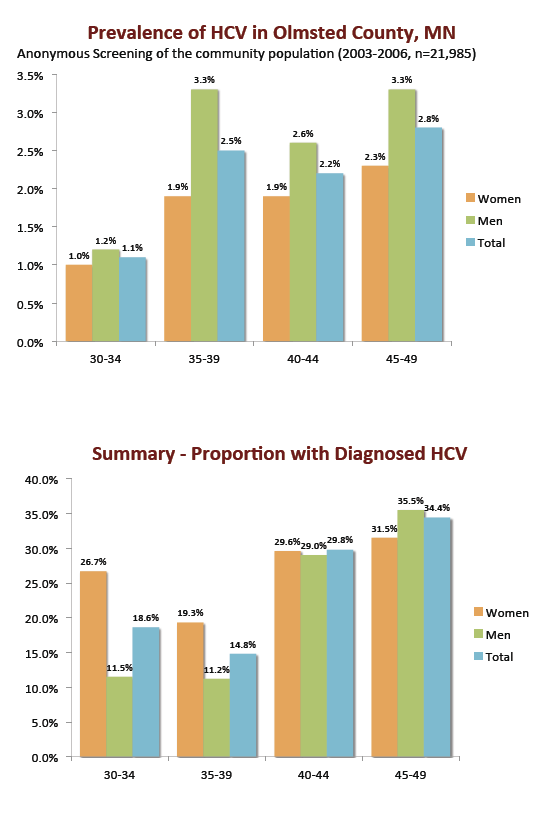
|
| |
|
 |
 |
|
|